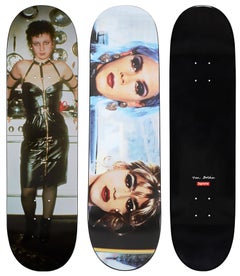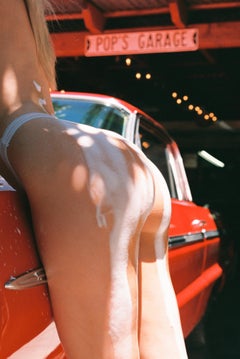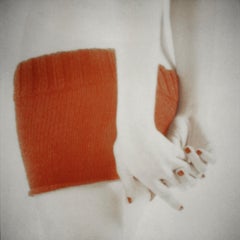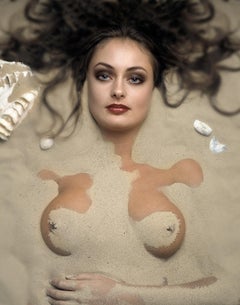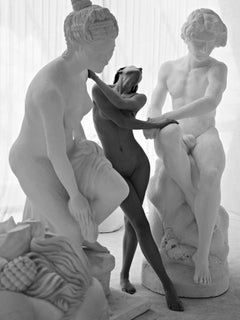Medium Nude Photography
21st Century and Contemporary Contemporary Nude Photography
Offset
21st Century and Contemporary Contemporary Color Photography
Color, Archival Pigment
21st Century and Contemporary Contemporary Nude Photography
Archival Ink, Rag Paper, Giclée
2010s Contemporary Figurative Photography
Photographic Paper, C Print, Polaroid
1980s Contemporary Color Photography
Archival Paper, Photographic Paper, Color, Giclée, Pigment, Archival Pig...
21st Century and Contemporary Contemporary Nude Photography
Pigment, Archival Paper
21st Century and Contemporary Contemporary Black and White Photography
Paper, Digital
Early 2000s Modern Figurative Photography
C Print
21st Century and Contemporary Contemporary Black and White Photography
Digital Pigment
21st Century and Contemporary Modern Black and White Photography
Black and White, Pigment, Archival Pigment
21st Century and Contemporary Contemporary Nude Photography
Rag Paper, Archival Pigment
2010s Contemporary Black and White Photography
Photographic Paper, Polaroid, Color, C Print, Archival Paper
1980s Contemporary Black and White Photography
Photographic Film, Archival Paper, Photographic Paper, Black and White, ...
21st Century and Contemporary Contemporary Figurative Photography
Plexiglass, Archival Pigment
1990s Contemporary Nude Photography
Archival Pigment
21st Century and Contemporary Contemporary Nude Photography
Rag Paper, Archival Pigment
21st Century and Contemporary Contemporary Nude Photography
Archival Paper, Pigment
21st Century and Contemporary Contemporary Nude Photography
Archival Paper, Pigment
Early 2000s Art Nouveau Nude Photography
Gold Leaf
21st Century and Contemporary Contemporary Color Photography
Color, Archival Pigment
2010s Contemporary Nude Photography
Photographic Paper, C Print
2010s Contemporary Black and White Photography
Archival Pigment
2010s Color Photography
Photographic Paper, Pigment
21st Century and Contemporary Contemporary Black and White Photography
Archival Pigment
2010s Contemporary Nude Photography
Archival Pigment
2010s Modern Nude Photography
C Print
1990s Contemporary Nude Photography
Archival Pigment
21st Century and Contemporary Contemporary Nude Photography
Archival Paper, Pigment
21st Century and Contemporary Contemporary Color Photography
Color, Archival Pigment
21st Century and Contemporary Contemporary Color Photography
Archival Pigment
21st Century and Contemporary Modern Black and White Photography
Archival Pigment, Black and White
2010s Contemporary Black and White Photography
Archival Paper, Photographic Paper, C Print, Color, Polaroid
21st Century and Contemporary Modern Black and White Photography
Black and White, Pigment, Archival Pigment
21st Century and Contemporary Contemporary Nude Photography
Plexiglass, Pigment
2010s Contemporary Nude Photography
Archival Pigment
21st Century and Contemporary Modern Black and White Photography
Black and White, Archival Pigment
21st Century and Contemporary Surrealist Black and White Photography
Photographic Paper
1980s Contemporary Black and White Photography
Photographic Film, Archival Paper, Photographic Paper, Black and White, ...
2010s Contemporary Color Photography
Photographic Paper, Pigment
21st Century and Contemporary Contemporary Black and White Photography
Archival Pigment
2010s Contemporary Black and White Photography
Silver Gelatin
21st Century and Contemporary Contemporary Color Photography
Color, Archival Pigment
2010s Contemporary Nude Photography
Photographic Paper, C Print
Early 2000s Art Nouveau Nude Photography
Gold Leaf
Early 2000s Contemporary Color Photography
C Print
21st Century and Contemporary Modern Black and White Photography
Archival Pigment, Black and White
2010s Contemporary Nude Photography
Archival Pigment
21st Century and Contemporary Contemporary Black and White Photography
Archival Pigment
2010s Contemporary Nude Photography
C Print, Color, Polaroid, Archival Ink, Archival Paper, Archival Pigment
21st Century and Contemporary Surrealist Black and White Photography
Photographic Paper
2010s Contemporary Nude Photography
Archival Pigment
2010s Contemporary Nude Photography
Archival Pigment
21st Century and Contemporary Modern Black and White Photography
Black and White, Archival Pigment
2010s Contemporary Nude Photography
Archival Pigment
21st Century and Contemporary Contemporary Nude Photography
Archival Pigment
2010s Contemporary Nude Photography
Archival Pigment
21st Century and Contemporary Contemporary Color Photography
Color, Archival Pigment
21st Century and Contemporary Modern Black and White Photography
Black and White, Pigment, Archival Pigment
21st Century and Contemporary Contemporary Color Photography
Color, Archival Pigment
21st Century and Contemporary Contemporary Nude Photography
Pigment, Plexiglass
